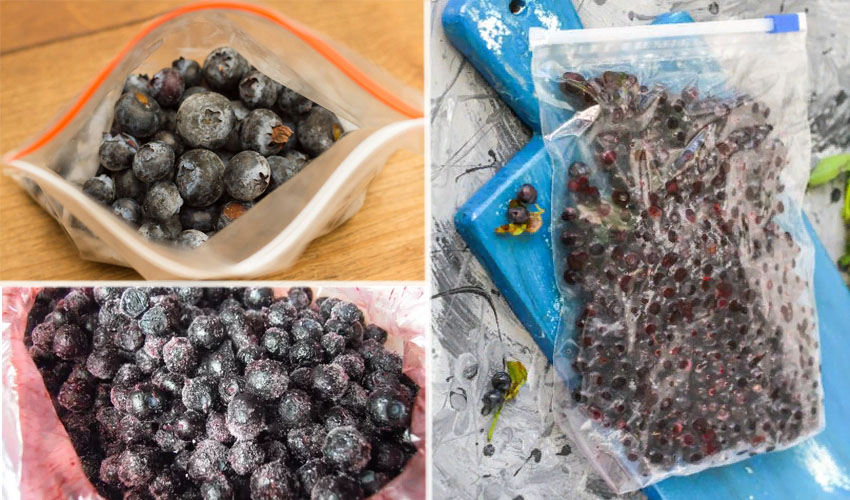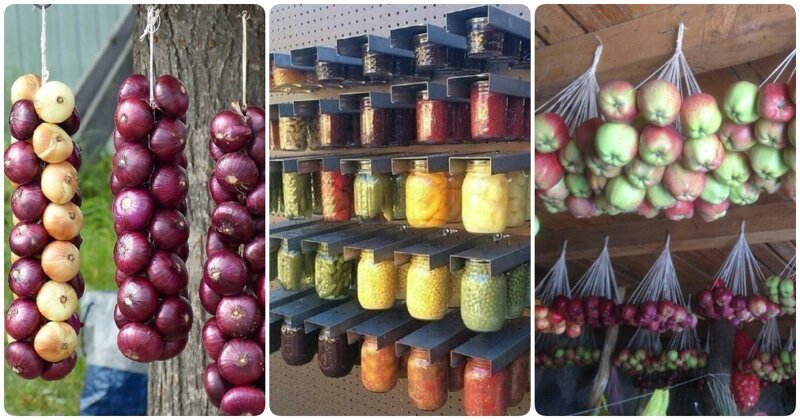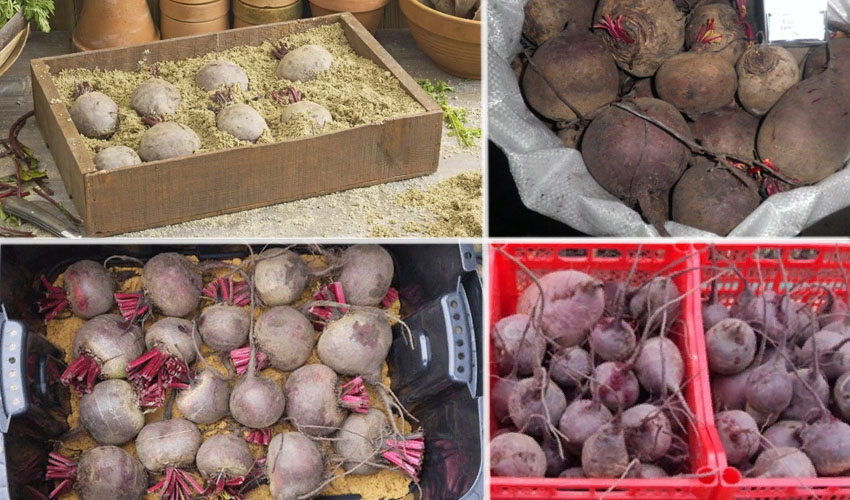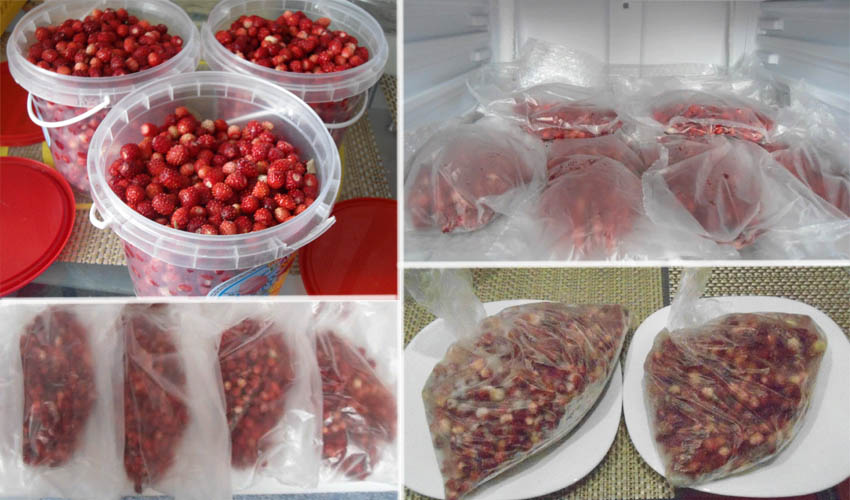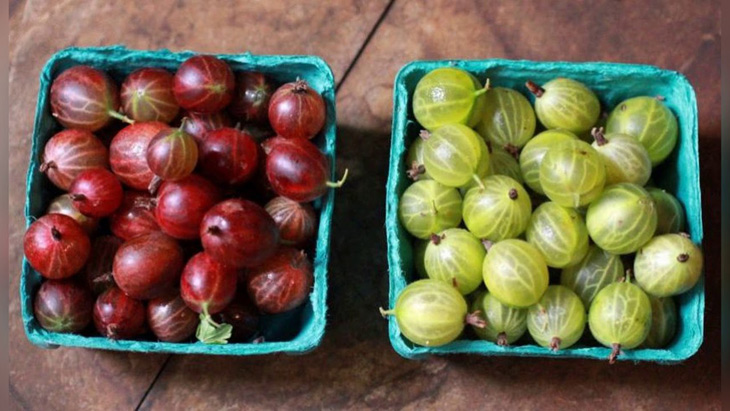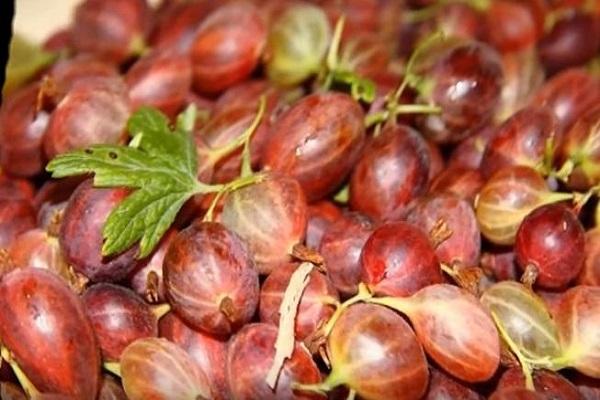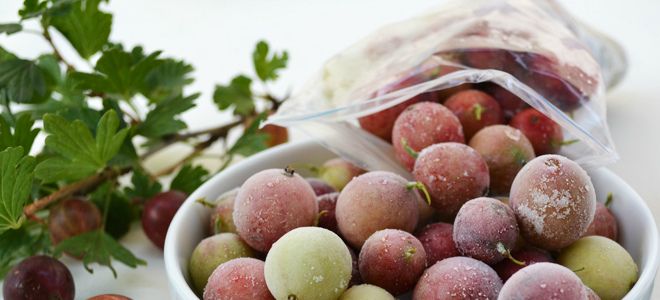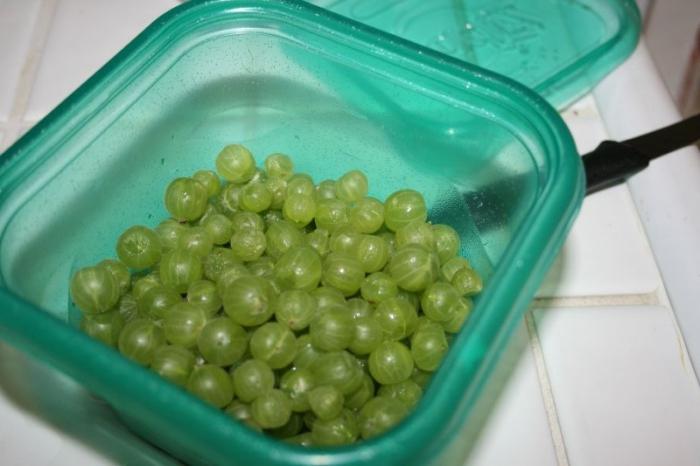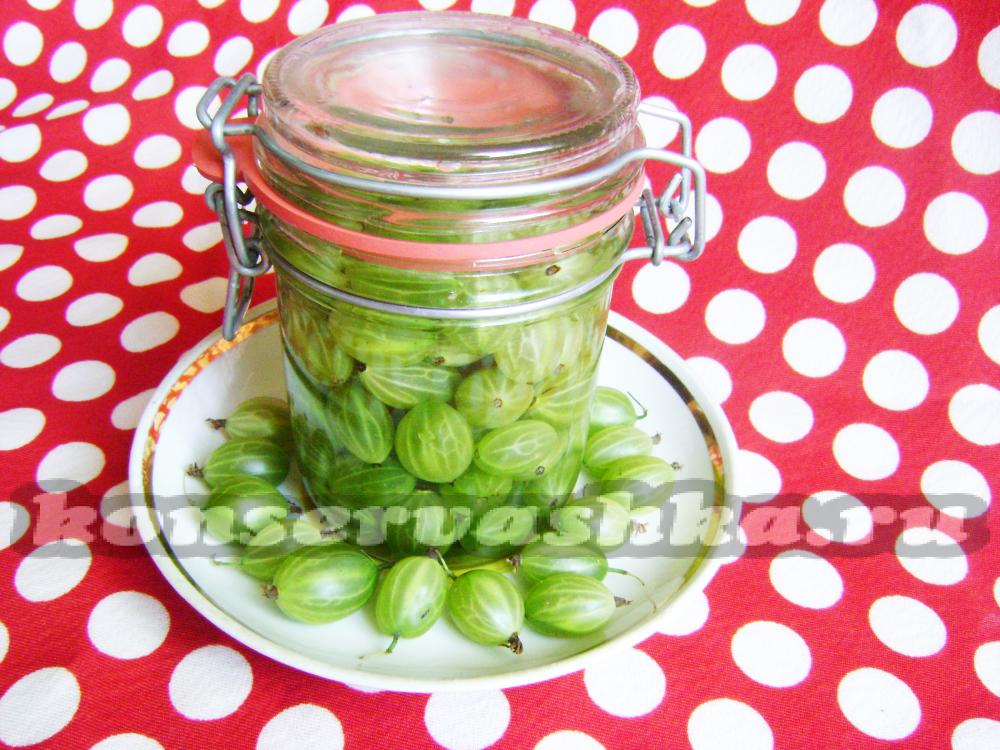How to store gooseberries
The taste of gooseberry is unlike anything else. They want to enjoy them always, and not only in the warm season. Therefore, the desire to preserve unusual berries for future use arises quite often. Now you will learn how to achieve this.
How to harvest gooseberries
Gooseberries, which are intended for storage, are collected in containers prepared in advance: boxes or baskets. It is better to choose small containers: this will preserve the integrity of the berries.
This is especially important for fruits with a thin skin.
Like all berries, gooseberries should be picked on a dry, clear day.
It should not be forgotten that most varieties have thorns. Therefore, it is worth taking care of suitable long-sleeved clothing and wearing gloves in advance.
Fully ripe berries must be removed from the bush along with the stalk.
Plucked fruits should not be poured from one container to another: this can damage them.
General notes on storage
Drying and freezing are the main ways to protect gooseberries from spoiling. But unripe, loose and damaged fruits are not suitable for storage. Also, overripe berries are not suitable for this, which, when dried or frozen, quickly lose their beneficial properties.
However, you can do without freezing and drying by simply placing the fruits in a cool room. True, in this case, they can be saved for a very short time. For example, freshly harvested, ripe, undamaged fruits under such conditions are stored for no more than 4–5 days. As for the immature, they remain edible a little longer - up to 10 days. But only in containers whose capacity does not exceed 5 kg.
Ripe gooseberries make delicious preserves and marmalades.
Freezing gooseberries
For a simple freezing procedure, yellow-red berries are best suited.
- First of all, we carefully sort them out, remove all the stalks.
- After that, I wash the fruits under a good stream of water, then dry them, putting them on paper.
- After drying, put the gooseberries on a plywood board of a suitable area or cardboard, and put them in the freezer.
- When the berries are frozen, pour them into bags (preferably plastic ones) or put them in a small airtight container made of plastic. Close it tightly and place it back in the freezer.
Read more How to store plums
If the temperature in the freezer is not more than zero degrees, and the relative humidity does not exceed 90%, then the fruits will remain edible for 2 months without losing 70% of their beneficial properties. If the temperature is minus 3 degrees or lower, they will not deteriorate for six months.
Before eating, the berries should be kept for 5–6 hours in the upper compartments of the refrigerator. The temperature should be no more than 5-6 degrees. Then you can start eating them.
How to dry gooseberries
- For drying, you need to select the most ripe and completely undamaged fruits. Then rinse them under a good pressure of water and clean from all sepals and remnants of stalks.
- After that, the berries must be placed in a perforated container and held for several minutes over boiling water. This procedure is called blanching. It protects the gooseberries from darkening, speeds up their drying.
- After its completion, the berries must be laid out on a baking sheet or sieve as thinly as possible, and then put in an oven or drying oven.
- First, set the temperature to 30-35 degrees. After a while (after 8-10 minutes) it is increased to 65-70 degrees. In no case should you start drying the fruits immediately at too high temperatures, otherwise they will be covered with a crust and become inedible.
- The oven or drying cabinet should be ventilated from time to time during drying to get rid of water vapor that is harmful to gooseberries.It is also advisable to gradually close the doors, otherwise the berries may steam out. We must not forget about mixing drying fruits. The average drying time is approximately 5-7 hours.
- When the procedure is over, the berries must be poured into bags made of cloth, paper or gauze.
They remain edible for as long as 2 years.
Read more How to store spinach
Dried gooseberries are perfect for compotes and baking. It perfectly replaces raisins.
Gooseberries are a rich source of a variety of vitamins. And most importantly, they have an unsurpassed taste. Just follow the simple tips above, and the fruits of this shrub will delight you all year round.
In what conditions to store
Each seedling (container) usually has a label on which the name and variety of the plant is indicated. Often, information related to the conditions of its storage prior to disembarkation is also indicated there.
The storage temperature for seedlings should be between 0 ° C and + 2 ° C. This allows the plants to be dormant, and to tolerate the wait for planting normally. If there is a cellar or basement, seedlings can be stored there.
When the plants are dormant, do not disturb them once again. It is enough to see the condition of the kidneys several times during the winter. At the same time, for winter storage, you can make a hole covered with coniferous branches from mice and other rodents.

Selection and preparation of berries for freezing
Useful qualities depend on the color of the fruit:
- green or white are the most useful;
- brown or red are the sweetest.
For dry freezing, specimens with thick skin and sweet flesh are ideal. Thin-skinned gooseberries are frozen with sugar. To preserve the shape of thin-skinned berries, they are frozen in sugar syrup.
Preparation rules:
- harvested in the morning. The weather must be dry;
- twigs and leaves are completely removed. Spoiled and unripe berries are laid aside. Only dense specimens are left, which, when pressed, remain elastic. The unripe berry is very hard. Soft - stale or overripe;
- cut off the tails;
- washed;
- transferred to a towel and dried. Excess moisture should not remain, otherwise an ice layer will form on the surface.

It is necessary to follow certain rules for choosing berries:
- when buying, they choose dry berries with stalks, which help to preserve useful qualities;
- choose mature, no signs of disease and no damage;
- unripe have poor taste, therefore they are not suitable for winter storage. An exception can be made if in the future you plan to cook compotes or jam.

Features of storing live beer
This beer is considered one of the most valuable varieties. In small quantities, the product helps to improve metabolic processes and supplies the body with vitamins. In order for the drink to bring maximum benefit to the body, it must be properly stored. It should be borne in mind that draft alcohol in plastic has a short shelf life.
> When poured into dishes, the product is susceptible to the influence of pathogenic microorganisms from the environment. This shortens its shelf life. Beer that has been poured into a glass will lose its flavor literally within an hour. If the plastic container was hermetically sealed, the drink can be consumed for 3 days if the necessary rules are followed.
It should be borne in mind that a live drink has an ideal taste. Such alcohol is not exported because it cannot withstand transportation. The shelf life of the product is very short:
- Beneficial microorganisms in a live product are present for no more than 1 day. However, it is recommended to keep it in the refrigerator.
- If the drink is on the table or on a lighted windowsill, it will quickly lose its taste.
- Live yeast is considered one of the most valuable components of such alcohol. They die quickly when exposed to low temperatures.
Options for preparations for the winter
In order to get the nutrients contained in gooseberries in winter, the berry can not be stored as a whole, but can be made from freshly picked fruits.
Adjika
To make adjika, you need to gain a kilogram of ripe berries and take 300 grams of garlic. Also for this recipe you will need a spoonful of salt and coriander seeds, 10 pieces of hot pepper.
To create this blank, you must mix the indicated ingredients. Further, these components must be passed through a meat grinder. The resulting mass should be spread out in glass containers, filling the containers to the top.
Mousse with oranges
To prepare this product, you need to take 2 oranges (small size recommended) and 1.5 kilograms of sugar for one kilogram of green fruits. All components (except sand) must be rinsed under water. Oranges should also be doused with boiling water and cut into several pieces. Further, the main components are passed through a meat grinder and mixed with sugar. Then the resulting mass is whipped with a blender and laid out in glass jars. It is recommended to store this mousse in the refrigerator.
Jam
To make jam, you need to mix gooseberries and sugar (one kilogram each), and then add a liter of water. This composition must then be put on fire and brought to a boil. As soon as the cooked mass cools down to room temperature, the syrup must be put in the refrigerator for a day.
The next day, the composition is boiled again. Next, the mass is again removed to the refrigerator. These manipulations must be repeated within one week. During this time, pectin will be released from the composition, due to which the prepared syrup will take the form of jam, which can be laid out in containers.

Sauces
Gooseberry can be used to make 2 sauces. For the first, you need to mix together 300 grams of garlic, a kilogram of berries and a bunch of dill and pass this mass through a meat grinder.
To cook tkemali, you need to take sour gooseberries and boil until softened. Next, the fruits must be mixed with:
- two heads of garlic and red pepper;
- dill;
- basil;
- cilantro;
- parsley.
This mixture also needs to be kept on fire for 15 minutes, after which the tkemali can be laid out in jars.
Jelly jam
To make jam, you need to mix a glass of water and 170 grams of sugar and put this composition on fire. Next, add a kilogram of pure gooseberries to the mixture and boil for 15 minutes. After cooling, the cooked jam is mixed with 100 grams of gelatin and a stick of vanillin.
How to dry gooseberries at home: simple ways
Outdoors
Drying time: 5-9 days.

This is the simplest method and does not require any special equipment. Large sieves, grates, oven trays, and even upside-down drawers lined with paper can serve as drying surfaces.
- Wait for dry, windy, hot weather, when the temperature is kept at 22-25 ° С.
- Place the fruits in one layer on the prepared surfaces.
- Install the grates in a wind-blown location. It is advisable that the berries are not exposed to direct sunlight. For example, it could be a barn, shed, or balcony. Many people choose an attic for drying. But remember to open vents and skylights to ensure good air circulation.
- Cover the gooseberry with cheesecloth or a thin cloth to keep insects out of it.
- Stir the berries once a day. Sort them by size if necessary. Select larger fruits by placing them on a separate pallet.
- In the evening, bring the dryer into the house before the dew falls, and put it back in the morning.
Dry gooseberries should be firm but slightly springy. If it is completely "rubber", then the drying time will have to be extended by several days.
In the oven
Drying time: 5-7 hours.
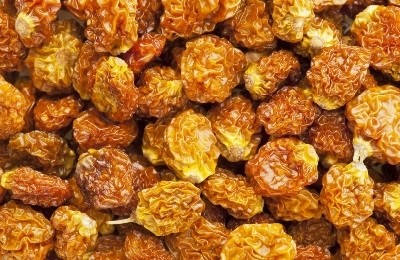
Regardless of what type of stove, there is no difference in technology.The only difference is the gap in the door. For electric models, it is enough to leave 4-5 centimeters, and for gas models - 15-20.
- Line the prepared baking sheets with baking parchment.
- Arrange the berries in an even layer. Make sure they do not touch each other.
- Set the temperature to 35-40 ° C.
- Dry the gooseberries for 1-3 hours. This is a kind of withering process, after which the berries will not burst when heated.
- Increase the temperature to 65-70 ° C.
- Stir in the berries every few hours.
Drying will take much less time than outdoors. Some do not leave the oven door open all the time, but only periodically open it for 20-40 minutes. If your device has Convection mode, turn it on. Hot air will move inside the cabinet under the influence of the built-in fan, forcibly ventilating the berries.
In an electric dryer
Drying time: 10-12 hours.

The preparation is done as standard. The fruits are sorted out, lightly blanched with hot steam. Some people recommend boiling the berries a little in the syrup before drying.
- Arrange the gooseberries in one layer on the wire racks.
- Set the temperature to 40 ° C.
- Leave the fruits to pre-dry for 2-4 hours.
- Increase the temperature to 60-70 ° C.
- Dry the food, changing the grates every 2 hours.
Storage preparation
In order for the product to be stored for a long time, it should be removed from the garden according to certain rules. For example, if the tops and roots are cut off during the harvesting process, the fruit can be stored for no more than 5 hours. Summer residents, who have experience in growing and collecting radishes, water it well in the evening, and harvest it in the morning. The tops should be cut at a distance of 2 cm from the fruit; after watering, nutrients remain in it for some time. This helps to extend the shelf life of the radish by several days.
The shelf life of radish harvested according to the rules is about 2 weeks at a storage temperature of + 2 ° C to + 4 ° C. But if the vegetable was bought in a store or at the market, this time is significantly reduced.
Exceptionally ripe root crops that do not have cracks and rotten areas are selected for storage. Cracked vegetables are usually overripe with voids inside. They are not suitable for storage and taste bad.
It should be remembered that medium-sized radishes have the longest shelf life.

Winter gooseberry preparations that do not require cooking
Gooseberry is one of the most beloved horticultural crops in Russia. An unpretentious plant that does not require much attention from a gardener, it gives delicious and very healthy berries. Everyone remembers the sweet and sour taste of gooseberries and a delicate unique aroma. To keep these berries intact, many housewives use cooking recipes that do not require cooking when harvesting gooseberries for the winter. With this method, all the beneficial properties of the berries are preserved as much as possible.
 Gooseberry
Gooseberry
Gooseberry mousse with orange
You will need:
- 1 kg of gooseberries;
- 1.5 kg of sugar;
- 2 medium oranges.
Rinse the gooseberries thoroughly and sort out, remove spoiled berries and stem tails. Rinse oranges, pour over with boiling water, cut into pieces. Then scroll the berries and oranges through a meat grinder with a fine sieve, add sugar and beat with a blender for more airiness. Put the resulting mousse in pre-prepared, sterile jars and close the lids. Store in a refrigerator or other suitable temperature-controlled place (basement, cellar, pantry, etc.).
Gooseberry jam
It will take a little patience and skill to make a jam in which the berries remain in their original uncooked form. For this recipe you will need to take:
- 1kg gooseberry;
- 1 kg of sugar;
- 1 liter of water.
 Before conservation, you need to remove the gooseberry stalks
Before conservation, you need to remove the gooseberry stalks
Pre-wash and peel the berries from the tails.Then cover the gooseberries with sugar and add water, put on fire, bring to a boil, but do not boil. Put the bowl with the future jam in the refrigerator and leave until tomorrow. The next day, put the jam mass on the fire in the same way, bring to a boil and remove. This procedure must be carried out seven days in a row. During this time, pectin will stand out from the berries, the syrup will turn into a transparent jelly, and the berries will remain whole and undiluted. In winter, such a delicacy will delight you with the sweet and sour taste and aroma of summer.
Where does dried gooseberries begin in a dryer: selection of raw materials and their preparation

Gooseberry selection
When figuring out how to dry gooseberries for the winter, pay enough attention to the preparatory work. It depends on them how high-quality product you get. Give the advantage to ripe fruits with dense pulp and small seeds inside.
Do you have an electric dryer?
Not really
- Red nose.
- Hare in cabbage.
- Gingerbread man.
- Roaring lion.
- Aristocrat.
- The miller's wife.
- Malachite.
- Chernomor.
- Russian.
- Black Prince.
Make sure that overripe, bursting fruits do not get into the dryer. It is better to collect gooseberries on a personal farm in dry, clear weather, when the temperature outside the window has not yet dropped below 22-25 ° С. The fruits look ripe from the beginning of July, but it is still too early to harvest them. Better to wait until mid-August.
Choose whole berries, and immediately discard those with traces of damage, disease or pest activity, incomprehensible spots.
Fruit preparation and blanching

All berries are thoroughly washed under running water. They are sorted out by hand, since you need to throw out the twigs, stalks, sepals that have got into the raw material. The fruit to dry should be approximately the same size.
Blanch the berries over steam to preserve the light shade, and at the same time speed up the drying process. Place the prepared gooseberries in a special wire rack or a regular colander. Steam them over boiling water for 3-5 minutes. Place on paper towels to absorb any remaining moisture.
Pickling gooseberries
Pickling is one of the most unusual ways to store gooseberries, but it has many admirers.
- In order to pickle the berries, they are sorted out and the largest of them are left.
- Then you need to remove the sepals and stalks.
- This is followed by rinsing and placing in jars.
- Under the influence of high temperatures during sterilization, the berries can burst. To prevent this from happening, they are pre-pierced in several places with a needle.
- At the bottom of the jar, put some black peppercorns, cinnamon (a small piece) and a spicy clove (1 piece).
- Marinade is made from sugar (300 grams per 1 liter of water) and vinegar (100 grams).
- The can is sterilized for at least 15 minutes.
- After sterilization, the marinade is poured into a jar, after which the jar is covered with a sterile lid and rolled up.
Pickled gooseberries are perfect as a side dish for meat and fish baked over charcoal.
Storing gooseberries in this form is possible for 1-3 years.
Eating gooseberries has a beneficial effect on human health. It contains a large amount of vitamins necessary for the proper functioning of the whole body. In addition, it has an excellent taste that cannot be confused with anything. If you follow the tips for proper storage of gooseberries, this berry will delight and warm in the cold winter.
Ways to freeze gooseberries at home
Prepare your freezer before freezing. Wash thoroughly and dry with a dry cloth. There should be no extraneous odors, since the gooseberry will absorb them, which will negatively affect not only the aroma, but also the taste.
To preserve the aroma of berries, you cannot store them in the same compartment along with fish and meat products.
Whole berries
Whole berries are great for filling pies and cakes. With their help, at any time of the year, you can cook delicious compote or jam.To properly freeze gooseberries, you need to follow these simple guidelines:
- Sort the fruits, then gently rinse and dry.
- Place on a tray and send to the freezer compartment. Turn on deep freeze. Withstand an hour.
- Arrange in prepared containers or bags. Place the containers in the freezer. After two days, close the lids. Release all air from the bags and close. It is necessary to pack quickly so that the berries do not have time to defrost. Without cooking, frozen gooseberries can be stored until next season.

Freezing sugar-covered gooseberries
You will need:
- sugar - 600 grams;
- gooseberries - 2 kilograms.
Preparation:
- For workpieces, only strong, dense specimens are used, which are washed and dried. Cover with sugar and stir.
- Place in containers. Freeze for two days. Then close the lids. Or packaged in bags that must be tightly tied. This method prevents the workpiece from turning into a block of ice.
In sugar syrup
This option is suitable for harvesting specimens with thin skin and slightly overripe. This type of freezing will help turn the berries into an independent dessert.
You will need:
- sugar - 500 grams;
- gooseberry;
- water - 1 liter.
Preparation:
- Pour sugar with water. A sprig of mint can be added to improve the taste. Boil. Boil for three minutes. Cool down.
- Put the prepared berries in a container. Pour in syrup. Do not top up to the brim for about two centimeters.

- Place in a freezer. To freeze. Store containers open for two days, then close the lids. The smaller the container, the faster the product will freeze.
- Defrost in the refrigerator. You can store a frozen product for no more than six months.
- If whole berries are required for cooking, then they are added without defrosting.
Puree
It is delicious to harvest gooseberries in the form of mashed potatoes. Overripe, but not rotten fruits, as well as berries with a thin skin, are ideal for this.
You will need:
- sugar - 350 grams;
- gooseberries - 1 kilogram.
Preparation:
- Remove leaves and twigs. Rinse and dry with a paper towel. Place in a blender bowl and beat.
- You can use a crush. In this version, it will be possible to preserve a greater amount of vitamins, since upon contact with the metal, the berries are oxidized, as a result of which the beneficial properties are lost.

- Pour through a sieve. The mass will turn out to be homogeneous, without the skin. You can skip this step, as the peel contains the largest amount of vitamins.
- Cover with sugar and stir. Transfer to plastic serving containers. Place in a freezer. Freeze for an hour, then cover with lids. The fruits retain their beneficial properties for no more than 6 months.
- You can pour the prepared mass into ice molds or plastic cups. To freeze. Then take out and pack the small cubes into bags. The product in glasses is wrapped with cling film.
Gooseberry winter preparations
A berry like gooseberry is ideal for winter harvesting. It can be used to make various additives, mousses and sauces, jams and preserves.
Gooseberry adjika
Gooseberry adjika is quick and easy to prepare. For this you will need:
- 1 kilogram of green berries;
- a spoonful of salt;
- 300 grams of garlic;
- a spoonful of coriander seeds;
- 10 pieces of hot pepper.
The ingredients are washed, passed through a meat grinder, mixed and placed in small jars.

Gooseberry mousse with oranges
To prepare gooseberry mousse with citrus fruits, you need to take:
- two small oranges;
- 1.5 kilograms of granulated sugar;
- 1 kilogram of fruit.
The berries are washed, the tails are removed, the spoiled fruits are thrown away. Oranges at this time are also washed, doused with boiling water and cut into several parts.
Then all the ingredients are passed through a meat grinder, sugar is added to them, the whole mass is whipped again with a blender.The finished mousse is laid out in sterile jars, closed with a lid. This product is stored in the refrigerator.

Jam from berries
Gooseberry jam is very tasty. To prepare it you will need:
- sugar;
- water;
- berries.
All components are taken one kilogram and one liter. The fruits are first peeled from the tails and washed. Then they are covered with sugar and filled with water. The container is put on fire, the liquid is brought to a boil. Jam in a container is placed in the refrigerator for one day.
After a day, it is already brought to a boil and put back into the refrigerator. The manipulations are repeated for seven days. When pectin starts to be released, the syrup converts to jelly, and the fruits retain their integrity.

Gooseberry sauces
Gooseberry can be used to make interesting and aromatic sauces for meat, fish and other dishes. You can make garlic sauce. For this you need to take:
- 1 kilogram of berries;
- a bunch of dill greens;
- 300 grams of garlic.
All ingredients must be scrolled through a meat grinder, salt. The prepared sauce can be kept in the refrigerator in small jars. Gooseberry-based tkemali sauce will also be delicious. For its preparation, it is better to take sour gooseberries. Fruits (1 kilogram) are pre-washed, filled with water and boiled until they are completely softened. Then to the mass in a crushed form is added:
- a bunch of parsley, dill, basil, cilantro;
- head of garlic;
- two pieces of red pepper.
The resulting composition is kept on fire for 15 minutes, after which it is poured into jars.

Jelly jam
To make jelly jam, you will need the following components:
- 1 kilogram of elastic fruits;
- 170 grams of sugar;
- 1 glass of water;
- vanilla stick;
- 100 grams of gelatin.
The berries are cleaned of tails and stalks, washed. At this time, sugar is poured with water and put on fire. When it is completely dissolved, gooseberry is added there. The mass is cooked for about 15 minutes.
When the composition cools down, gelatin and vanilla are added to it. The mass is put on fire again. Hot jam is poured into jars.
What to do
In the process of storing the crop, there is a risk of encountering problems. Most often they consist in rotting and sprouting of the bulbs. In order to preserve most of the crop, it is necessary to take timely protective measures.
If the onion is rotting
Fungi pathogens can exist for a long time inside the bulbs. Rot affects onion turnips during storage due to excessive humidity. Most often, weakened fruits suffer from the disease, as a result of which they lose their taste characteristics and, over time, completely rot.
If signs of rotting are found, it is necessary to destroy the affected vegetables to prevent the spread of the disease.
If the bulb sprouts
If stored in a warm room with a high humidity, there is a risk of vegetables sprouting. Bulb necks contain moisture inside, and if they are too thick, then these specimens are most susceptible to germination. One way to solve the problem is to use lime paste. The substance is used to treat the root lobes of the bulbs after shortening the roots. Another way to combat sprouting is to cauterize the roots. The disadvantage of both processing methods is that such bulbs cannot be used as planting material.
Share link:
How to store gooseberries: what are they and how to keep them in winter?
Gooseberry is a source of numerous vitamins (C, B and others), trace elements (copper, phosphorus, iron) and nutrients (organic unsaturated acids, glucose, pectins), which does not lose its beneficial properties when stored properly.
It has excellent taste, which is why it is actively used both fresh and in fruit drinks, compotes, jellies and other desserts.
Gooseberry storage principles
In order for the product not to lose its taste, healing properties, it is important not only to store it correctly
Particular attention should be paid to the selection of berries, as well as the conditions for their transportation. In addition, storage should be divided into two types:
- short (short);
- long-term.
On the market, you can see a large number of products offered at various stages of maturation:
- technical immaturity;
- average maturity;
- fully ripe fruits.
The smallest loss of useful properties is noted when storing gooseberries in the following form:
- Dried - for this use an electric drying or oven (40 Co);
- Puréed - to prevent souring, add sugar in a 1: 1 ratio, grind;
- Whole frozen.
The first way assumes:
- piercing each berry with a toothpick;
- layering with sugar sprinkling (200 g per 1 kg of product);
- exposure for a day at room temperature;
- pumping juice;
- drying berries on a baking sheet for 20 minutes at 85 ° C;
- distribution to banks.
Not everyone knows that not quite ripe green berries are more resistant to seasonal storage. They have a sour taste and are generally not intended to be eaten fresh. The fruits are more suitable for:
- canning;
- freezing;
- drying;
- drying.
When self-harvesting, it is recommended to harvest approximately 5-7 days before the expected maturity. You can determine readiness by appearance:
- most of the berries have reached their maximum size;
- collected juice;
- veins are visible on the surface.
It is advisable to harvest with a leg, so as not to damage the integrity. The most suitable conditions for harvesting are dry weather, as the products deteriorate faster after rain or fog.
For primary transportation, a plastic container with a volume of up to 5 liters is suitable. If there is a long-term transportation, it is better to give preference to containers with solid walls.
Freezing requires preliminary preparation of the product. Contaminated berries should be washed, dried, laid out in a thin layer for a day. During this time, at room temperature, they ripen. After that, they are carefully collected and frozen at a temperature of -2 ° C.
It is better to collect ripe products in a basket made of chip tape with a volume of up to 2.5-3 kg. Then the berries are laid out in a thin layer, dried. Then they can be folded into a wooden box lined with paper on the inside. In this form, they are stored for up to 5 days in a dark, cool room. Further, some of the products can be placed in the freezer.
To increase the storage time up to a month, ripe gooseberries are transferred to a cardboard box, the temperature is provided no more than 0 ° C, the relative humidity is no more than 90%.
Valuable tips and advice
For drying berries, cotton cloth, thick paper with high moisture absorption is best suited. The room should be cool, well ventilated, protected from direct sunlight.
Freezing is best done in:
- plastic containers for food;
- cardboard boxes;
- food plastic bags.
The maximum shelf life, depending on the method, should not exceed:
- fresh - up to 7-10 days (ripe), up to 1.5 months (technically immature);
- frozen - up to six months;
- grated with sugar (in the refrigerator) - up to 2 months;
- dried - up to 5-6 months;
- dried - 1 year.
In order not to lose juice during defrosting, you need:
- Remove the container from the freezer.
- Open, refrigerate for 5 hours.
- Leave at room temperature for another hour.
Thawed berries can be used as follows:
- add to compote, fruit drink, fruit salads;
- make jelly, pie filling, etc.
- decorate desserts.
The dried product vaguely resembles raisins. Before use, it must be poured with boiling water, syrup, alcohol, then used for preparing meals or drinks.Knowing all the intricacies of how to store gooseberries, you can be content with this healthy sweet all year round. By using it in different forms, you can not only enjoy the taste, but also prevent the development of seasonal vitamin deficiency.
(No Ratings Yet) Loading ...
Collecting and storing gooseberries - Gooseberries - beta gardener
Gooseberries can be picked at varying degrees of maturity. For the preparation of compotes, the fruits are best picked unripe, for jam - half-ripe. Berries are picked selectively, followed by rapid processing.
It is better to collect gooseberries in the morning and evening hours and immediately refrigerate them in the refrigerator, basement, or glacier.
Unripe fruits are stored in the refrigerator for three to five days, and ripe ones for one or two days.
"Tsarskoe" jam
Prepared from unripe green berries, which, after sorting and washing, are cleaned of stalks, sepals and seeds, make a full or partial cut with a knife, remove the seeds. The fruits are washed, placed in an enamel pot or aluminum basin, poured over with cold water and left for 5-6 hours.
When standing, it is recommended to perehilat the berries with cherry leaves, which give the jam a special aroma and help preserve the green color.
The soaked fruits are thrown into a colander and dipped in boiling syrup (for 1 kg of gooseberries, 1.5 kg of sugar and 2 glasses of water are taken).
Before cooking, the fruits are kept in syrup for at least 3-4 hours. After that, they are boiled until cooked in 2-3 doses (5-7 minutes each) in boiling syrup and insisted for 5-6 hours.
After each cooking, the jam is quickly cooled and transferred to clean, dry glass jars, covered with lids or parchment paper, tied with twine and placed in a cool, dry place for storage.
Gooseberry compote
It is very difficult to make a good compote from gooseberries. When canning, berries often burst, so it is better to chop them, boil a little in sugar syrup and pour into jars, seal, sterilize. Take a little syrup for cooking (cover the bottom of the pan), since the berries secrete juice. Carefully make sure that the berries do not stick to the bottom of the pot or basin. For syrup take
Assorted compote
More delicious compotes are obtained from several types of fruits. 1. Gooseberries - 2 parts, raspberries - 1 part, summer apples - 2 parts. 2. Gooseberries - 2 parts, black currants - 1 part, summer apples - 2 parts. 3.
Gooseberries - 2 parts, strawberries - 1 part, summer apples - 2 parts. 4. Gooseberries - 3 parts, summer apples - 1 part, cherries - 1 part.
5.
Gooseberries - 2 parts, pitted plums - 1 part, summer apples - 1 part, cherries - 1 part.
Marinade
A good slightly acidic marinade (0.1-0.6% acetic acid) can be prepared from gooseberries. Pouring for the marinade is prepared in a wooden, glass or enamel bowl. Sugar and salt are heated in a little water until they are completely dissolved.
Then add water to the specified volume and boil for 2-3 minutes. The resulting solution is filtered and mixed with vinegar according to the recipe.
For pouring 1 liter of marinade, take Prepared berries are placed in glass jars, poured with cooled marinade, sealed and pasteurized.
Pickled slightly acidic gooseberries are added to salads and served with main courses.
Dried gooseberries
For cooking, use large fruits, taken in an unripe state. The berries are separated from the stalks, washed in boiled water, pricked with a special hedgehog. Then they are put in a container, sprinkled with sugar in layers at the rate of 450 g per 1 kg of berries and kept for 26 hours at a temperature of 20 ° C. The resulting juice is poured into jars without heat treatment, covered with lids and placed in the refrigerator. Juice is used for 2-2.5 months. In another case, it is heated to a temperature of 80-85 ° C, poured into cans and rolled up with lids. The remaining mass is poured with syrup (300 g of granulated sugar and 250 g of water per 1 kg of mass), kept in a closed container at a temperature of 85 ° C for 8 minutes, in an oven at 80 ° C for 20 minutes and at 65-70 ° C - twice for 25 minutes, in a sieve at 30 ° C - 3-5 hours. The moisture content of the product is leveled within 3-4 days, bringing to 22-23%.






